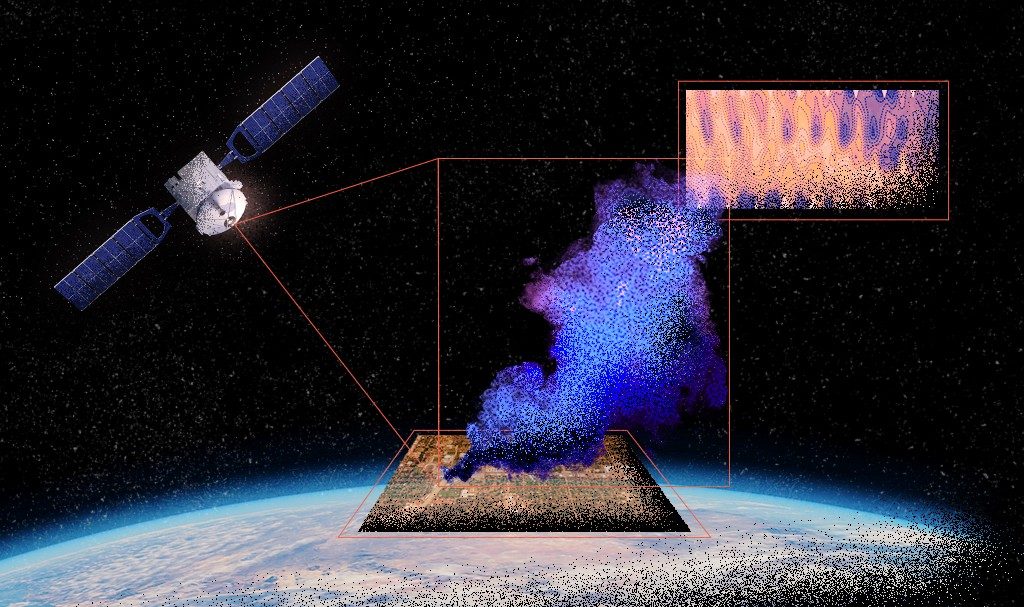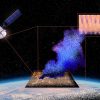
AsianScientist (Sept. 11, 2024) – Researchers from Kyoto University, Japan, have developed an advanced method to automatically detect global methane emissions. Driven by deep learning model known as a vision transformer, the technique uses novel multispectral satellite imagery to detect methane emissions. The technique significantly enhances the accuracy and frequency of methane detection at a global scale. The study was published in Nature Communications
Methane is a powerful greenhouse gas. Its short-term warming effect is stronger than carbon dioxide. Thus, reducing the global levels of methane is vital to fight climate change. However, the accurate monitoring of methane emissions has been a tough challenge for decades due to the limitations of existing methods. The current detection methods require trade-offs between resolution, coverage and detection accuracy. This study uses artificial intelligence (AI) to address those challenges.
“Our method can potentially provide methane detection at high frequency and high resolution from point sources, which paves the way for a systematic quantification method,” said Bertrand Rouet-Leduc, lead author of the study and a researcher at Kyoto University’s Disaster Prevention Research Institute, Japan, and Geolabe Los Alamos, USA. He stressed the urgency of targeting the levels of methane due to its stronger short-term warming effect. “Curbing methane emissions is the fastest way that we have to slow down global warming. It is possibly the only way that we can slow down global warming in our lifetimes,” he noted.
The team of researchers developed a unique AI model that can detect methane emissions in Sentinel-2 satellite data. It identifies plumes as small as 0.01 km² corresponding to the methane sources emitting between 200-300 kg of methane per hour. This frequency and resolution of methane detection is higher than previous methods, thereby marking an important step towards automated, high-resolution methane detection at a global scale. To check the accuracy and reliability of the model, the researchers validated their study findings through comparisons with airborne measurements of methane.
Rouet-Leduc explained the innovative approach taken by the team: “Previous methods to detect methane in satellite data relied on processing the data to enhance the methane’s signal and then having a human look at the data. Training an AI to do this job instead achieves two things: it is cheap and automatic, allowing us to analyze vast amounts of data and it significantly improves detection accuracy by about an order of magnitude.”
The researchers trained the AI model by using synthetic methane plumes in order to compensate for the scarcity of real-world examples. The training involved embedding of simulated methane signatures in satellite images and then teaching the AI to locate these hidden signals. This process could be repeated millions of times to ensure strong training of the AI model. “It’s like finding a needle in a haystack,” Rouet-Leduc said. “It’s easy to lose a needle in a haystack, but finding it again is the challenge. Similarly, we can simulate methane leaks in satellite data and train the AI to locate them.”
At the same time, the findings of the study can also be applied to the work done by governments and other environmental agencies. This innovation can support atmospheric mitigation efforts by providing frequent and high-resolution data on methane emissions. This will help facilitate quick repair of leaking assets and help in investment decisions dealing with methane reduction. “Our method unlocks the possibility of detecting at large scales the precise source of methane emissions, down to the specific asset emitting,” Rouet-Leduc said. “We can now detect more than 80% of the sources of methane in regions like the Permian Basin, one of the main sources of anthropogenic methane in the US. This allows for comprehensive monitoring over extended periods with a fraction of the effort previously required.”
Looking ahead, the research team plans to use cloud computing to increase their analysis and compile global emission catalogs. This will make detection better and reduce any possible mistakes, which will help global efforts to lower greenhouse gas emissions and fight climate change.
—
Source: Kyoto University ; Image: Shelly Liew/Asian Scientist Magazine
The article can be found at: Automatic detection of methane emissions in multispectral satellite imagery using a vision transformer
Disclaimer: This article does not necessarily reflect the views of AsianScientist or its staff.

